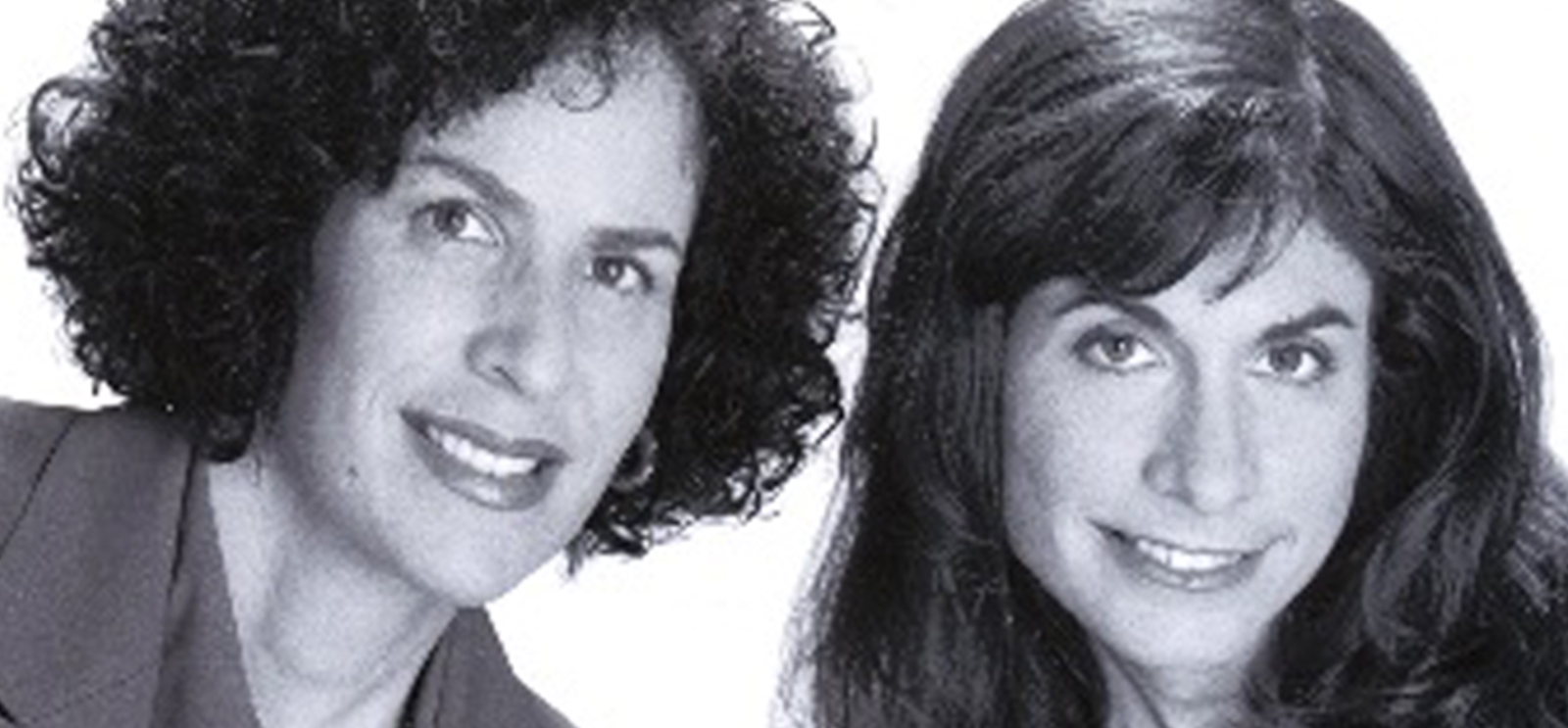
Twins Nancy (right) and Anne Segal differ in appearance and personality. (Photo by Michael Keel)
Nancy Segal’s experience as a twin inspired her to ask, what makes them alike?
Sometime around her fourth birthday, Nancy L. Segal, AM’74, PhD’82, realized that she was a fraternal twin, that there was a “same-age person who grew up alongside me but didn’t look anything like me.” Segal’s twin sister, Anne, had wavy hair; Segal’s hair was straight. Their faces were dissimilar; their height disparity noticeable. Segal was more outgoing and less studious than her sister. Growing up in the Bronx neighborhood of Riverdale, the twins sought out separate groups of friends.
Segal, now a psychology professor and founder of the Twin Studies Center at California State University, Fullerton, noticed that her school’s identical twin pairs were strikingly similar. “When I was a child, I didn’t know about genes, of course,” she says. “But what I did realize was that the identicals looked a lot alike, and they seemed to be a lot alike. [My sister and I] looked different, and we were different.” The identical twins also appeared to have a strong bond with their counterparts, while Segal and her sister were never especially close.
Segal has since built a career in twin research that has included four books, more than 130 journal articles, and nearly 200 interviews and appearances on news programs and talk shows. Her 2011 book, Someone Else’s Twin: The True Story of Babies Switched at Birth (Prometheus Books), chronicles the consequences of an unintentional baby switch in the 1970s at a Canary Islands hospital. The switch caused a set of identical twin girls to grow up apart, unaware of each other’s existence. The Wall Street Journal called the book a “fascinating account of the switched-at-birth misstep and the painful family and legal entanglements that followed.”
At the start of her scholarly career, Segal researched cooperation, competition, and altruism in fraternal and identical twins for her UChicago dissertation. Identical twins share virtually 100 percent of their genes, and fraternal twins share 50 percent on average. At the time, remembers Segal, many researchers argued that the environment was the prime determinant of individual behavior and that genetics played a relatively minor role. Based on her research, Segal suspected that biology deserved more consideration.
She did her postdoc at the University of Minnesota, working on psychologist Thomas Bouchard’s Minnesota Study of Twins Reared Apart. The study, launched in 1979 and lasting two decades, tested 137 adult twin pairs who had been raised in different homes. Eighty-one pairs were identical and 56 were fraternal. Bouchard’s group also used data from the Minnesota Twin Registry, started in 1983 by researchers studying identical and fraternal pairs raised together.
The general finding, explains Segal, who worked on the project for nine years, was “that genes are much more pervasive than anyone would have ever imagined,” a controversial idea when the data was first released in 1981. Across most of the measured behavioral characteristics, identical pairs—whether reared apart or together—scored more alike than fraternal pairs. Even more telling, on many traits, such as aggression, the identical twins raised apart displayed roughly the same degree of similarity as those raised together.
Although the study showed that genes account for the vast majority of family similarities, Segal gives social factors their due. “Behavior is a complex combination of both genes and environment. Nothing is 100 percent genetic—everything is a combination of the two.” No pair of identical twins is exactly the same. The differences have to come from somewhere, Segal suggests, most likely unshared environmental experiences.
To research Someone Else’s Twin, Segal flew to Las Palmas, Spain. The book follows the 1973 case of Delia and Begoña, a pair of identical twins born at the Nuestra Señora del Pino Hospital. When Delia was accidentally switched with unrelated infant Beatriz, Begoña and Beatriz became same-age unrelated children raised together, and Delia became the first-born child of a family with whom she had no biological connection. Twenty-eight years later, Begoña was mistaken for Delia in a clothing store, a mix-up that eventually uncovered the baby switch and left the three women and their families stunned and embroiled in a years-long lawsuit with the hospital.
In 2009 the lawyers granted Segal full access to the families—they thought she would help their case, which concluded that same year and awarded the families €900,000 (then about $1.2 million). The case confirmed for Segal that, in general, people are more like their biological relatives—even if they have not been raised under the same roof. Segal learned that Beatriz realized at 12 that she looked, thought, and acted differently than the family who raised her. Delia and Begoña noted their striking behavioral similarities and described feeling a strong connection upon first meeting, echoing reared-apart identical twins in the Minnesota Study.
Segal’s latest book project is Born Together—Reared Apart: The Landmark Minnesota Twin Study (Harvard University Press, forthcoming). She expects the book, like her other endeavors, will attract publicity because twins—especially identicals—fascinate people. “Everybody would love to have someone who is just like them,” says Segal, who is now very close to her fraternal twin. “Many of us sort of envy that, and perhaps in some ways I did too. Maybe I wanted someone just like me. Who knows?”
